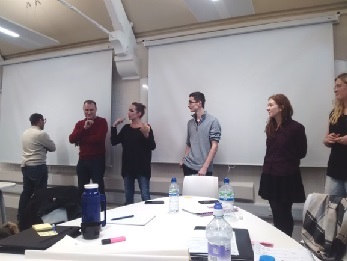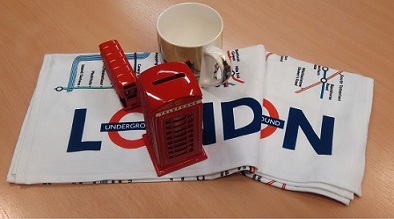On 8 October 2018 I helped to deliver an online briefing to introduce new tutors to TM356 Interaction Design and the user experience, with a number of module team and staff tutor colleagues. What follows is a really brief summary of what was covered during this session.
I’m posting this blog for a couple of reasons: (1) so I can effectively share notes with everyone who attended, (2) so I can look back to see what I did when I helped to run a briefing, and (3) so I can easily remember what I’ve done when I get to that part of the year when I have my annual appraisal!
Agenda
The structure of the briefing was as follows: begin with some introductions and an ice breaker (so the new tutors can meet each other), present an overview and background of the module, and then present a summary of the module materials. The next part was to say more about the role of the tutor and the way that the module applies something called the Group Tuition Policy, including a description of all the key learning events. At the end there was a Q&A session.
The main ‘presentation’ part of the session was recorded, but the icebreaker session and the Q&A wrap-up session was not.
Tools
One of the slides mentioned the key tools and technologies that could be used for learning. These were: Open Studio (for the sharing of designs), discussion forums (module, cluster, tutor group), Adobe Connect for online tutorials (with the tutor, cluster forums, and module wide events), and prototyping tools (such as Balsalmiq).
Module materials and philosophy
A significant part of TM356 is based around a project; students are asked to think about an interactive product, which can be the focus of their investigations. There is also an emphasis on ubiquitous computing, iteration and prototyping.
The module consists of four blocks: an introductory block, a requirements block, a design block and an evaluation block.
Block 1, the introductory block has 4 units. These have the titles: Unit 1 - What is interaction design? Unit 2 - Goals and principles of user-centred design, Unit 3 - The ‘who, what and where’ of the design context, and Unit 4: Interaction design activities and methods.
Block 2, requirements for interaction, also has 4 units: Unit 1 - Knowing the Users, Unit 2 - Exploring activities and contexts, Unit 3 – Data gathering for Requirements, and Unit 4 - Establishing Requirements.
Block 3, design and prototyping: Unit 1 - Understanding and Conceptualising Interaction. Unit 2 - Interface Types. Unit 3 - Design becoming concrete through prototyping, and Unit 4 - Conceptual design: Moving from requirements to first design.
Finally, Block 4, evaluation, has the following units: Unit 1 – Introduction to evaluation, Unit 2 - From data to information, Unit 3 - Planning and conducting an evaluation, and Unit 4 - Module reflection.
Tutorials
The module has three clusters (groups of tutors) which are broadly split across the UK. This module does have face to face tutorials; there is one towards the start of the module, and one towards the end. Here is a summary of the current group tuition plan:
- Interaction Design - getting you started
- Project choice workshop (module team)
- Preparing for TMA 2: practising skills - data gathering for requirements
- Prototyping and the development of concepts
- Design Hackathon (module team and some tutors)
- Prepare for TMA 3
- Preparing for TMA 4: practising skills for evaluating your design
- Preparing for exam: revision sessions (one block per cluster, and shared)
The design Hackathon is an event that is organised by the module team that is intended to expose students to collaborative design work. Suitable materials and electronics will be provided, and a topic for design activity will be agreed by the team beforehand.
At the event, tutors will help facilitate the students' work and reflections, in preparation for TMA03. For the 2018 presentation, the Hackathon will take place in Milton Keynes and Edinburgh at the same time, and students who were not able to attend physically will be able to connect to an online room and view presentations from both face-to-face groups to get some idea about what happened during the event.
Q&A and wrap up discussion
I didn’t make notes during the Q&A session, but I do remember a few things. I remember using the screen sharing tool in Adobe Connect to show tutors different parts of the TutorHome page and the module website. I also remember mentioning the importance of the tutor’s forum, highlighting a resources area, and a discussion about the introductory letter.
I’m also pretty sure that I emphasised that every tutor should make good use of their staff tutor (their line manager): their job is to answer questions about anything, and address any worries that they may have.


